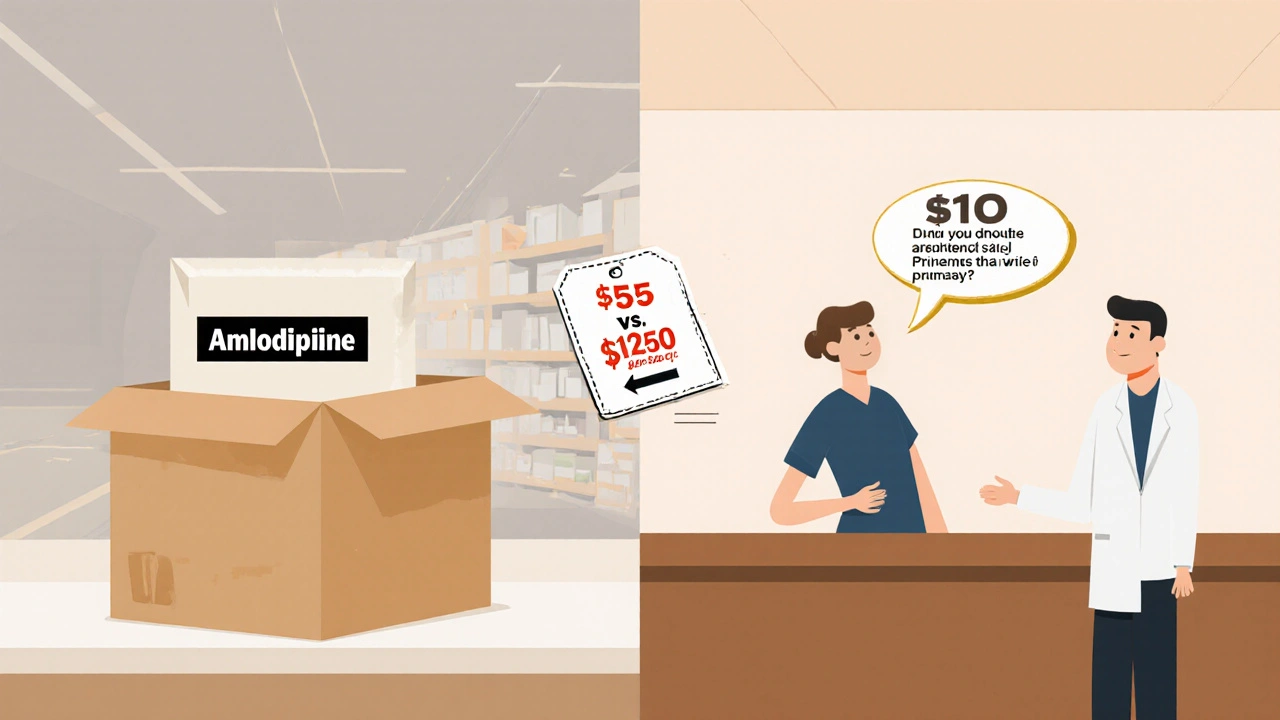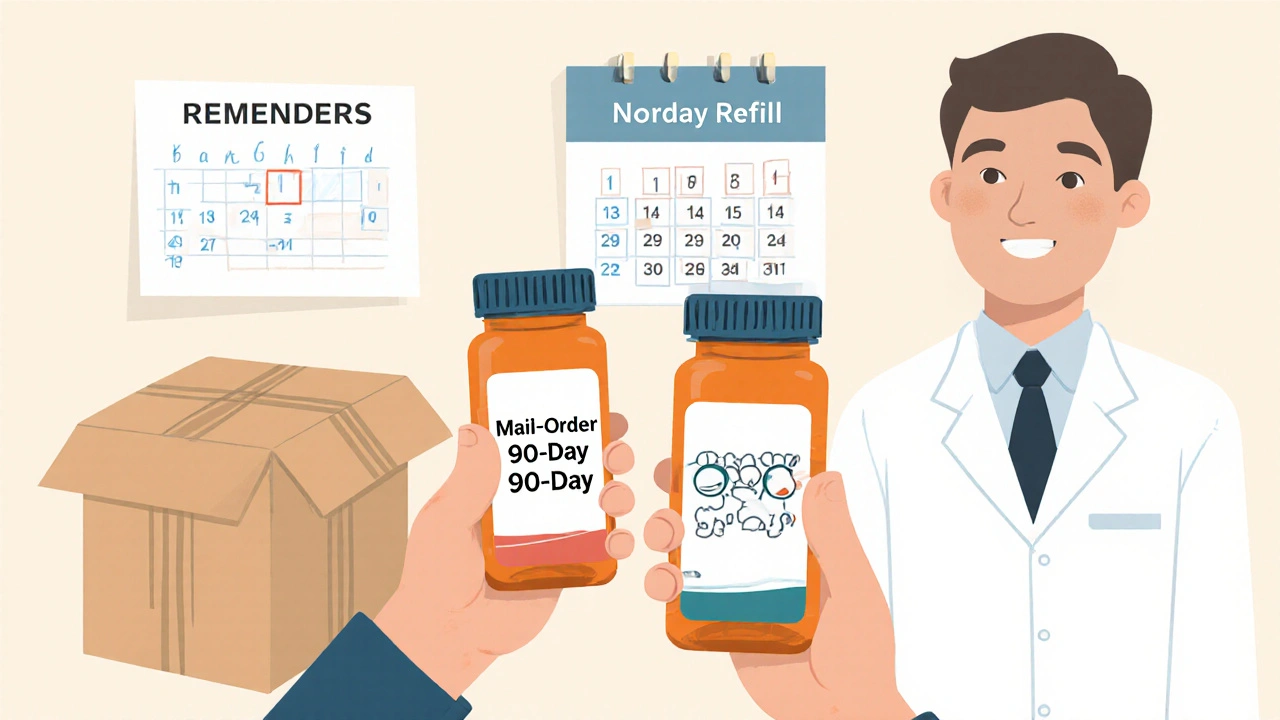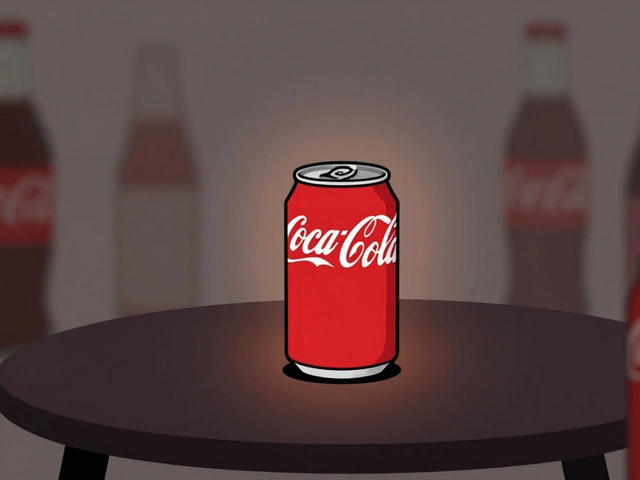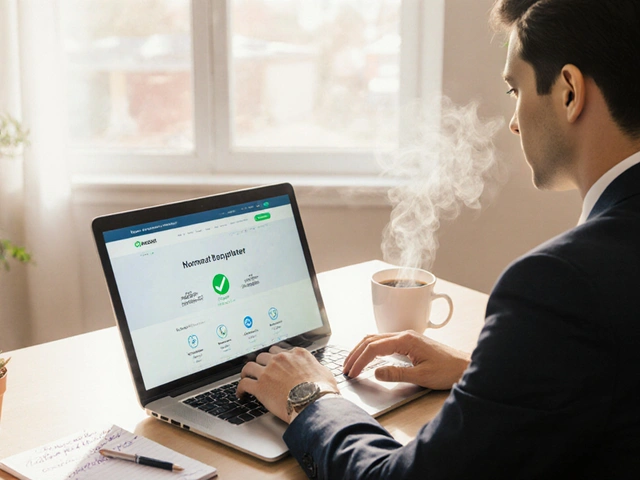Running out of your blood pressure pill on a Saturday? Paying $50 for a 30-day supply of your diabetes medication when you know it should cost less? You’re not alone. Many people pay more than they need to for prescriptions because they don’t know how to use mail-order pharmacy and local pharmacies together. The truth is, you don’t have to choose one over the other. You can use both to save hundreds a year - if you know how.
Know Which Medications Belong Where
Not all medications are created equal when it comes to cost and timing. Start by sorting your pills into three groups:- Maintenance meds: Drugs you take every day, for months or years - like high blood pressure pills, statins, or insulin.
- Acute meds: Short-term prescriptions - antibiotics, painkillers after surgery, or inhalers for flare-ups.
- Variable-dose meds: Drugs where your doctor changes the dose often - like antidepressants or thyroid meds.
Mail-order pharmacies are perfect for maintenance meds. You get a 90-day supply shipped to your door, often for less than a 30-day fill at your local pharmacy. For example, a generic amlodipine 5mg pill might cost $15 at your local CVS for 30 days, but only $12.50 for 90 days through mail-order - that’s $15 saved every three months. Multiply that by five or six meds, and you’re talking $100-$300 a year.
But don’t use mail-order for acute or variable-dose meds. If your doctor changes your antidepressant dose, and your mail-order pharmacy sends you the old version, you’ll waste money and risk your health. Local pharmacies let you talk to a pharmacist face-to-face, get the right dose immediately, and return unused pills if something doesn’t work.
Check Your Insurance’s Real Costs
Your insurance plan doesn’t always make it obvious what you’ll pay. Many people assume mail-order is cheaper - but that’s not always true. Some plans charge the same for a 90-day supply at a local pharmacy as they do through mail-order. Others charge more.Here’s how to find out for sure:
- Log into your insurance portal or call member services.
- Ask for the copay for a 30-day and 90-day supply of each of your maintenance meds - both at a retail pharmacy and through mail-order.
- Write it down. Don’t trust memory.
For example, one Medicare Part D plan charges $45 for a 30-day Tier 3 brand-name drug at a local pharmacy, but only $115 for 90 days via mail-order. That’s $115 for 90 days - or $1.28 per day - versus $45 for 30 days - or $1.50 per day. Even though the total is higher, the daily cost is lower. That’s the math that matters.
And here’s a secret: Walmart, Kroger, and Costco often offer 90-day generic fills at retail for $10-$25 with no insurance. You don’t need mail-order for that. Just ask your local pharmacist.
Use Local Pharmacies for Immediate Needs and Advice
Mail-order is convenient, but it’s slow. Most take 7-14 days to deliver. If you need a new antibiotic on a Friday night, you’re stuck. That’s where your local pharmacy shines.But don’t just go there when you’re sick. Build a relationship. Go in once a month to ask your pharmacist:
- “Is there a cheaper generic for this?”
- “Can I switch my maintenance meds to a 90-day fill here instead of mail-order?”
- “Do you have any discount programs?”
Pharmacists at chains like CVS, Walgreens, or independent stores often know about discount programs like CVS’s $4/$10/$25 generic list. They can also spot drug interactions you didn’t know about. One study found 78% of patients felt more confident about their meds after talking to a local pharmacist - compared to just 22% who used mail-order phone support.
And if you take insulin or other temperature-sensitive drugs? Mail-order can be risky. Packages sit in hot or cold delivery trucks. The FDA warns that biologics can lose potency if exposed to extreme temps. Local pharmacies keep meds in climate-controlled storage. That’s not a luxury - it’s safety.

Set Up Reminders and Automate What You Can
The biggest mistake people make? Waiting until they’re out of pills to reorder. Mail-order takes time. If you wait until day 28, you’ll run out before your package arrives.Set calendar reminders 10-14 days before your supply runs out. Use your phone, a sticky note, or a free app like Medisafe or MyTherapy. One Reddit user saved $427 a year by setting a reminder for his amlodipine refill. He ordered on day 20 - got it on day 27 - never missed a dose.
Also, ask your doctor to write prescriptions for 90 days instead of 30. Many doctors default to 30-day scripts because it’s easier. But if you’re using mail-order, a 90-day script means fewer authorizations, fewer calls to your insurance, and fewer chances for delays.
Watch Out for the Hidden Traps
It’s not all smooth sailing. Here’s what can go wrong - and how to fix it:- Plan changes: Your insurance might change which pharmacies they cover or raise mail-order copays. Review your annual benefits statement. Don’t wait for a surprise bill.
- System errors: One user got the wrong dose of antidepressant for two months because the mail-order system didn’t sync with his doctor’s EHR. Always check your pills when they arrive. Compare the label to your prescription.
- Out-of-state pharmacies: Some mail-order services are based in other states and may not be licensed in yours. Check your state’s pharmacy board website to confirm.
- Specialty drugs: Some high-cost meds - like those for MS or rheumatoid arthritis - might cost more through mail-order. Always compare.
GoodRx’s 2023 survey showed that 68% of people who coordinated their pharmacy use saved at least $150 a year. The top 32% saved over $300. That’s not luck - it’s strategy.

What’s Changing in 2025
The system is evolving. In 2024, Medicare Part D started standardizing 90-day copays across mail-order and retail. That means the old advantage of mail-order might shrink. But new tools are coming. Epic Systems launched a “Pharmacy Navigator” in late 2023 that automatically recommends whether you should get a refill from mail-order or your local pharmacy - based on your meds, insurance, and delivery time.Companies like UnitedHealthcare and Express Scripts now offer “Pharmacy Choice” programs. You can switch between mail-order and retail in one app. Refills sync. No more double orders.
But here’s the bottom line: if you’re still using only one pharmacy, you’re leaving money on the table. The future isn’t about choosing one over the other. It’s about using both wisely.
Start Today - Here’s Your Simple Plan
You don’t need to overhaul your life. Just do this:- List all your meds. Mark which are maintenance, acute, or variable-dose.
- Call your insurance. Ask for the exact cost of a 30-day and 90-day supply for each maintenance med - at retail and mail-order.
- Visit your local pharmacy. Ask if they offer 90-day generic fills for $10-$25. If yes, switch.
- Set reminders for mail-order refills - 10-14 days before you run out.
- Visit your pharmacist once a month. Ask one question. Keep doing it.
That’s it. No apps to download. No complex forms. Just smarter choices.
Prescription costs aren’t going down. But your out-of-pocket bill can. You just have to play the system - and you’re already halfway there.
Can I use mail-order pharmacy for all my medications?
No. Mail-order works best for maintenance medications you take daily for months or years - like blood pressure or cholesterol pills. Don’t use it for antibiotics, new prescriptions, or drugs that need frequent dose changes. These need immediate access and pharmacist input, which local pharmacies provide.
Is mail-order always cheaper than local pharmacy?
Not always. Some insurance plans charge the same or even more for mail-order. Always compare the exact copay for a 30-day vs. 90-day supply at both your local pharmacy and mail-order service. Walmart, Kroger, and Costco often offer 90-day generics for $10-$25 without insurance - sometimes cheaper than mail-order.
How long does mail-order take to arrive?
Most mail-order pharmacies take 7-14 business days to deliver. Factor that in when ordering. Never wait until you’re out of pills. Set a reminder 10-14 days before your supply runs out to avoid gaps in treatment.
Can I get 90-day fills at my local pharmacy?
Yes - if your insurance allows it. Many plans let you get a 90-day supply at a retail pharmacy for the same price as mail-order. Ask your pharmacist or call your insurance. Some pharmacies like CVS and Walgreens also have discount programs for generics that make 90-day fills affordable even without insurance.
What should I do if my mail-order pharmacy sends me the wrong medication?
Don’t take it. Call the pharmacy immediately and keep the pills. Then contact your doctor and insurance. Many patients have lost money and health because they didn’t check their pills. Always compare the label to your prescription before taking anything. If it’s wrong, report it - and ask for a refund or replacement.
Are there risks with shipping insulin or other sensitive meds?
Yes. Insulin, biologics, and some other drugs can lose effectiveness if exposed to extreme heat or cold during shipping. The FDA warns that temperature changes can damage these medications. Local pharmacies store them in climate-controlled environments. For safety, get these drugs from your local pharmacy - not mail-order.
How much money can I realistically save?
Most people who coordinate mail-order and local pharmacy save at least $150 a year. Those who do it well - switching maintenance meds to mail-order, using local pharmacy discounts, and avoiding delays - save $300 or more. One user saved $427 annually just by switching his blood pressure pill to mail-order and keeping his inhaler local.
Do I need to change my doctor to use this system?
No. Your doctor doesn’t need to change anything. Just ask them to write prescriptions for 90-day supplies instead of 30-day ones for your maintenance meds. Most doctors are happy to do this - it reduces refill calls and keeps you on track.




King Over
November 20, 2025 AT 11:02Just switched my amlodipine to mail-order and saved $18 this month. Local pharmacy was charging $45 for 30 days. Mail-order did 90 for $27. No brainer.
Johannah Lavin
November 21, 2025 AT 22:05OMG YES THIS!! 🙌 I used to panic every time I ran out of my insulin because mail-order took forever. Now I keep a 30-day supply local and refill the 90-day via mail every 2 months. Life changed. Also my pharmacist gave me a free glucose monitor last week. 💙
Ravinder Singh
November 22, 2025 AT 04:22Bro this is gold. I'm from India and we don't have mail-order like this, but the concept is universal. Local chemist here charges ₹200 for 90 days of metformin. Insurance? Nah. But they know me by name. One time I forgot my script and they still gave me 10 days. That's care. Not just commerce. 🙏
Michael Fessler
November 23, 2025 AT 16:35Just wanna add: if you're on statins or antihypertensives, ALWAYS check the NDC code on the bottle. Mail-order bots sometimes auto-replace generics with different manufacturers. Not all generics are bioequivalent. I had a 3-month episode of dizziness because my amlodipine switched from Mylan to Teva. Took me 6 weeks to catch it. Docs don't monitor this. You gotta.
Also, if your plan uses Express Scripts or CVS Caremark, they often have hidden tier shifts. Call member services and ask for the 'formulary tier and copay breakdown for maintenance meds' - not just 'how much do I pay'. Use the jargon. They'll give you the real numbers.
And for God's sake, don't trust the online portal. I once saw a $12 copay for my lisinopril online. Turned out it was for a 30-day at retail. Mail-order was $48. The site didn't label it. I cried.
Pro tip: print your copay sheet. Tape it to your fridge. Update it every January. Insurance changes are sneaky.
Also, if you're on insulin, NEVER use mail-order unless it's a refrigerated courier. I saw a guy on Reddit whose vial melted in a Texas mailbox. He ended up in the ER. FDA guidelines exist for a reason.
And yes - Walmart's $4 generics are real. I get my atorvastatin there for $8 a month. No insurance needed. Just ask the pharmacist for the 'Walmart $4 list'. They'll pull it up. No shame.
One more thing: if your doctor only writes 30-day scripts, ask them to write 'Dispense as Written' with '90-day supply' on the Rx. Most will do it. If they say no, ask why. It's not laziness - it's habit. You're the patient. You deserve better.
And if you're on antidepressants? Don't even think about mail-order unless your dose is rock solid. I had a guy get 20mg instead of 15mg because the system glitched. He got suicidal. Took him 3 months to recover. Always check the label. Always.
Bottom line: coordination isn't optional. It's survival. And it's free. Just do the work.
daniel lopez
November 24, 2025 AT 12:00HAHAHAHAHAHAHAHA. You people are so gullible. Mail-order? Please. Big Pharma and insurance companies are using this to lock you in. They know you'll be too lazy to check the pills. They send you the wrong dose. They delay shipments. They don't tell you the meds are stored in a warehouse in Nebraska with no AC. And then you die. And they make billions. You think this is saving money? You're being played. The real solution? Get off all meds. Eat kale. Meditate. Don't trust the system. It's rigged.
Nosipho Mbambo
November 24, 2025 AT 12:02Okay… so… I read this… and… I’m… not… sure… I… care…? Like… I just… take… my… pills… and… hope… for… the… best…? Also… why… is… this… so… long…? I… just… want… to… not… die…
Katie Magnus
November 25, 2025 AT 14:26Ugh. This is so basic. Like, duh. Of course you use both. Everyone knows this. I mean, I’ve been doing this since 2018. And I’m not even a nurse. I just have common sense. But you people need a 2000-word essay to figure it out? Sad.
Russ Bergeman
November 27, 2025 AT 13:26You forgot to mention that mail-order pharmacies often don't accept returns. So if your insurance changes and you're stuck with 90 days of a drug you can't use? Tough. You're out $100. Local pharmacies? Refundable. Always. This whole 'save money' thing is a scam. You're just trading convenience for risk. And you don't even know it.
Dana Oralkhan
November 28, 2025 AT 14:56Thank you for this. I’m a single mom of three and I was drowning in pill bills. I did exactly what you said - checked my insurance, switched my blood pressure med to mail-order, and started going to my local CVS once a month. Last week, the pharmacist told me about a free program for diabetics. I got free test strips for 6 months. I cried. Not because I’m emotional - because I finally felt seen.
Jeremy Samuel
November 29, 2025 AT 10:14Yeah but what if your local pharmacy is a 40 minute drive and you dont have a car? Mail order is the only option. You dont just magic up a ride to the chemist. This advice is for people with privilege.
Destiny Annamaria
November 30, 2025 AT 19:31Y’all need to stop being so serious about pills. 😅 I mean, I take my meds, I text my pharmacist when I’m low, I get my 90-day from Walmart, and I dance in my kitchen while I swallow them. Life’s too short to stress over copays. Also, my pharmacist calls me ‘sweetheart’ and gives me lollipops. That’s the real win.
Ron and Gill Day
December 2, 2025 AT 10:59This article is laughable. You think people don’t know this? Of course they do. But they’re too lazy to call their insurance. Too scared to ask their doctor. Too addicted to convenience. This isn’t a guide - it’s a diagnosis of a broken society. And you’re just giving them a Band-Aid.
Kristi Bennardo
December 3, 2025 AT 00:08As a licensed pharmacist with 22 years of experience, I must say this article is dangerously oversimplified. Temperature control for biologics? Yes. But you ignore the fact that many mail-order pharmacies now use cold-chain logistics with real-time tracking. And many state laws now require pharmacies to report dispensing errors - something your local CVS won’t tell you. This isn’t a choice between good and bad. It’s a choice between informed and ignorant.
Shiv Karan Singh
December 4, 2025 AT 10:23Bro, you're all wrong. The real issue? Your doctor is getting kickbacks from the mail-order company. That's why they only write 30-day scripts. They get paid per refill. You're being used. The solution? Go to a holistic clinic. Get CBD oil. Stop trusting the system. 🤡
Ravi boy
December 6, 2025 AT 02:31yo this is lit. i just switched my metformin to walmart $4 and my bp med to mail order. saved like 200 this month. also my pharmacist gave me a free banana for being 'a good human'. peace out 🍌✌️